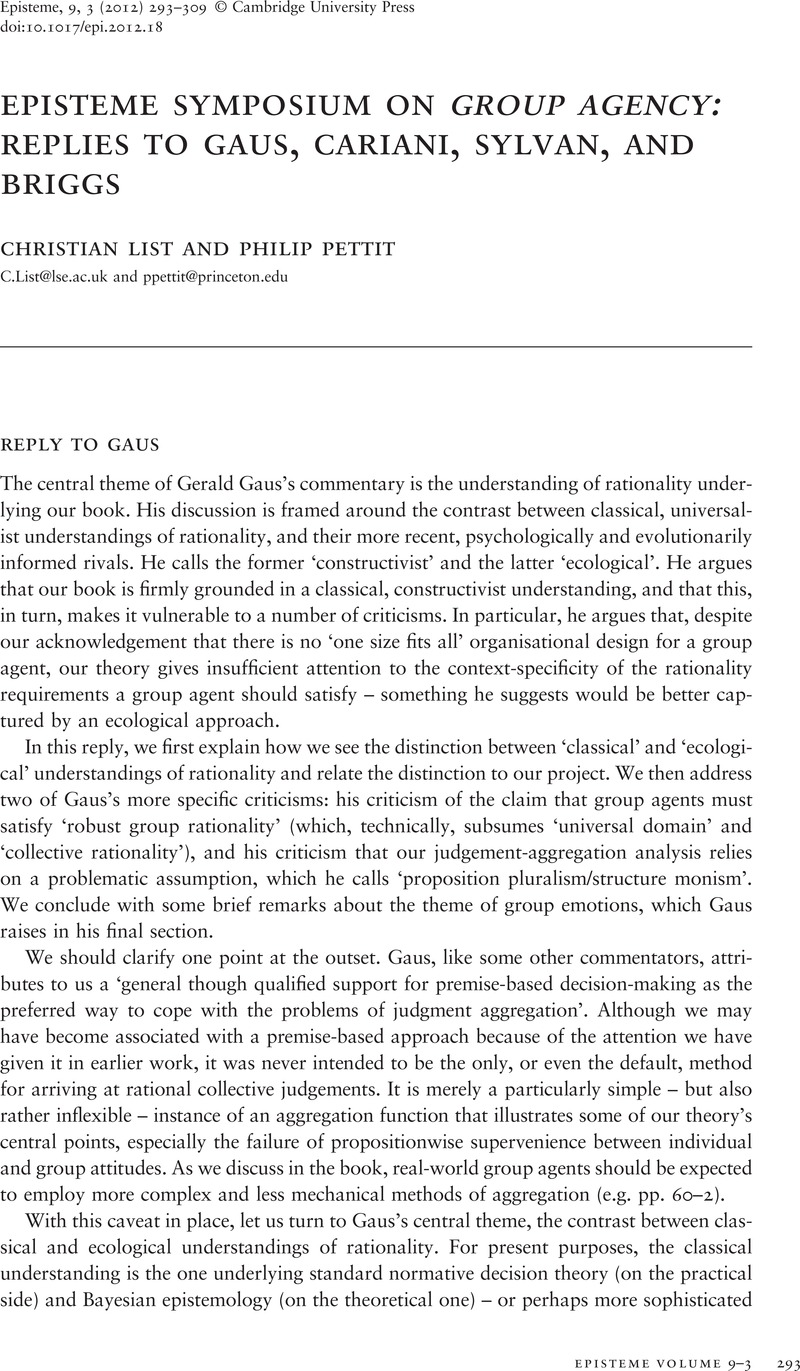Crossref Citations
This article has been cited by the following publications. This list is generated based on data provided by Crossref.
List, Christian
2014.
Three Kinds of Collective Attitudes.
Erkenntnis,
Vol. 79,
Issue. S9,
p.
1601.
Pettit, Philip
2014.
Rethinking the Individualism-Holism Debate.
p.
77.
List, Christian
2014.
Three Kinds of Collective Attitudes.
SSRN Electronic Journal,
Hirvonen, Onni
2017.
Groups as Persons? A Suggestion for a Hegelian Turn.
Journal of Social Ontology,
Vol. 3,
Issue. 2,
p.
143.
Thompson, Christopher
2018.
The Moral Agency of Group Agents.
Erkenntnis,
Vol. 83,
Issue. 3,
p.
517.
Smith, Leonie
2018.
The Curious Case of Ronald McDonald’s Claim to Rights: An Ontological Account of Differences in Group and Individual Person Rights.
Journal of Social Ontology,
Vol. 4,
Issue. 1,
p.
1.
Dragos, Chris
2021.
Epistemic autonomy and group knowledge.
Synthese,
Vol. 198,
Issue. 7,
p.
6259.



